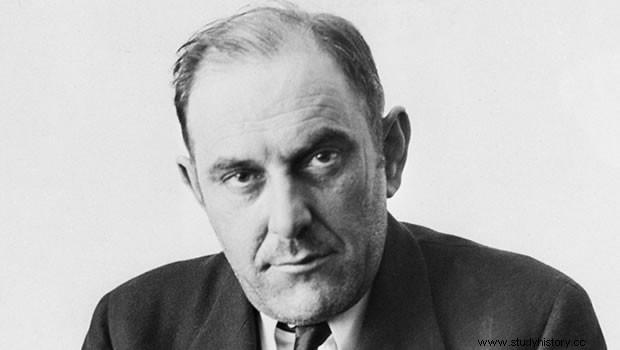The Eiffel Tower, built for the 1889 World's Fair in Paris, failed to endear itself to Parisians until after World War II. During the first half of the 20th century it was seen as an ugly and useless construction:it had been there since the exhibition because nobody wanted to take the trouble to dismantle it and tourists were not very interested in photographing themselves in front of it (no, not even the Japanese). . This debate intensified in May 1925, when a local newspaper reported on the deterioration that the structure was suffering and the high cost that its repair would entail.

Universal Exposition of Paris
Victor Lustig , a well-known swindler who by his thirties was a wanted criminal in almost all of Europe, was in Paris that same year and, after hearing about the problem with the tower, decided to take advantage of the situation. The scam he devised and ran would become one of the most famous in history and usually accompanies his first name as if it were part of his last name:
Victor Lustig, the man who sold the Eiffel Tower... twice!
The first step in deception was to get a victim. To do this, he contacted several scrap dealers in the city and, posing as a member of the government, summoned them to a secret meeting at the prestigious Hotel de Crillon to discuss a possible business deal. On the day of the meeting, Lustig presented himself as the deputy director general of the Ministry of Posts and Telegraphs, showing false documents that proved him to be so. After convincing them that he was who he claimed to be, he informed them that the government had decided to dismantle the tower and sell it for scrap due to the problems it was causing; bids for the tender had to be delivered the following day.

Victor Lusting
Lustig's objective was not to "sell" the tower but to allow himself to be bribed by one of the businessmen, in exchange for favoring them in the alleged tender. To achieve this he needed to generate enough interest in one of them for them to consider the idea. Things couldn't have gone better for Lustig, as one of the scrap dealers was André Poisson. , a young emerging entrepreneur who was looking to close his first big business deal and become known in the environment, so he would not hesitate to do whatever it took to be a winner. Lustig approached his victim and – very discreetly – asked for a bribe, which Poisson gladly paid. With the money in his pocket, the swindler hastily fled Paris and hid in Vienna; The poor junk dealer, after realizing the scam, felt so humiliated that he did not dare to notify the authorities.
After having spent a month in Vienna and seeing that no one was looking for him, Lustig decided to repeat the deception. He returned to Paris and again pretended to sell the tower, but someone alerted the police ahead of schedule and he fled France, narrowly escaping arrest. His new destination was the United States, where he continued to perform amazing deceptions until the police hunted him down and imprisoned him in Alcatraz, where he lived until his death in 1947.
Collaboration of Mauricio Filgueiras
